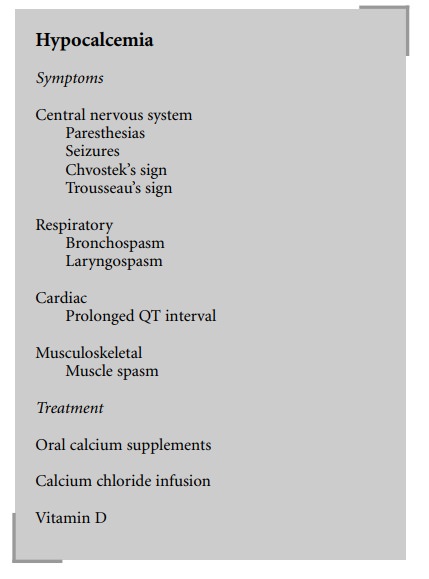Chapter: Clinical Cases in Anesthesia : Calcium Metabolism
What are the symptoms of hypocalcemia? How is this treated?
What are
the symptoms of hypocalcemia? How is this treated?
Decreased free ionized calcium causes nervous
system excitability. Symptoms include anxiety, muscle spasms, paresthesias, and
seizures. Physical examination can demonstrate Chvostek’s and Trousseau’s
signs. Chvostek’s sign is contraction of the facial muscles in response to
tapping over the facial nerve anterior to the ear. Trousseau’s sign is elicited
by occluding blood flow to the hand for 3 minutes with a blood pressure cuff. A
positive sign is flexion spasm of the metacarpo-phalangeal joints. Muscle
irritability can result in bronchospasm or even laryngo-spasm. The electrocardiogram
shows prolongation of the QT interval.
Mild, asymptomatic hypocalcemia following
para-thyroidectomy can be treated with oral calcium supple-mentation.
Symptomatic hypocalcemia can present after inadvertent injury to or removal of
all the parathyroid glands in a patient. When symptomatic, hypocalcemia should
be treated parenterally. Typically, a solution of calcium chloride 1 mg/mL in
D5W is infused at 0.5–2 mg/kg/hr. Vitamin D supplementation should be started
if a calcium chloride infusion does not improve symptoms or is needed for more
than a few days.

Related Topics